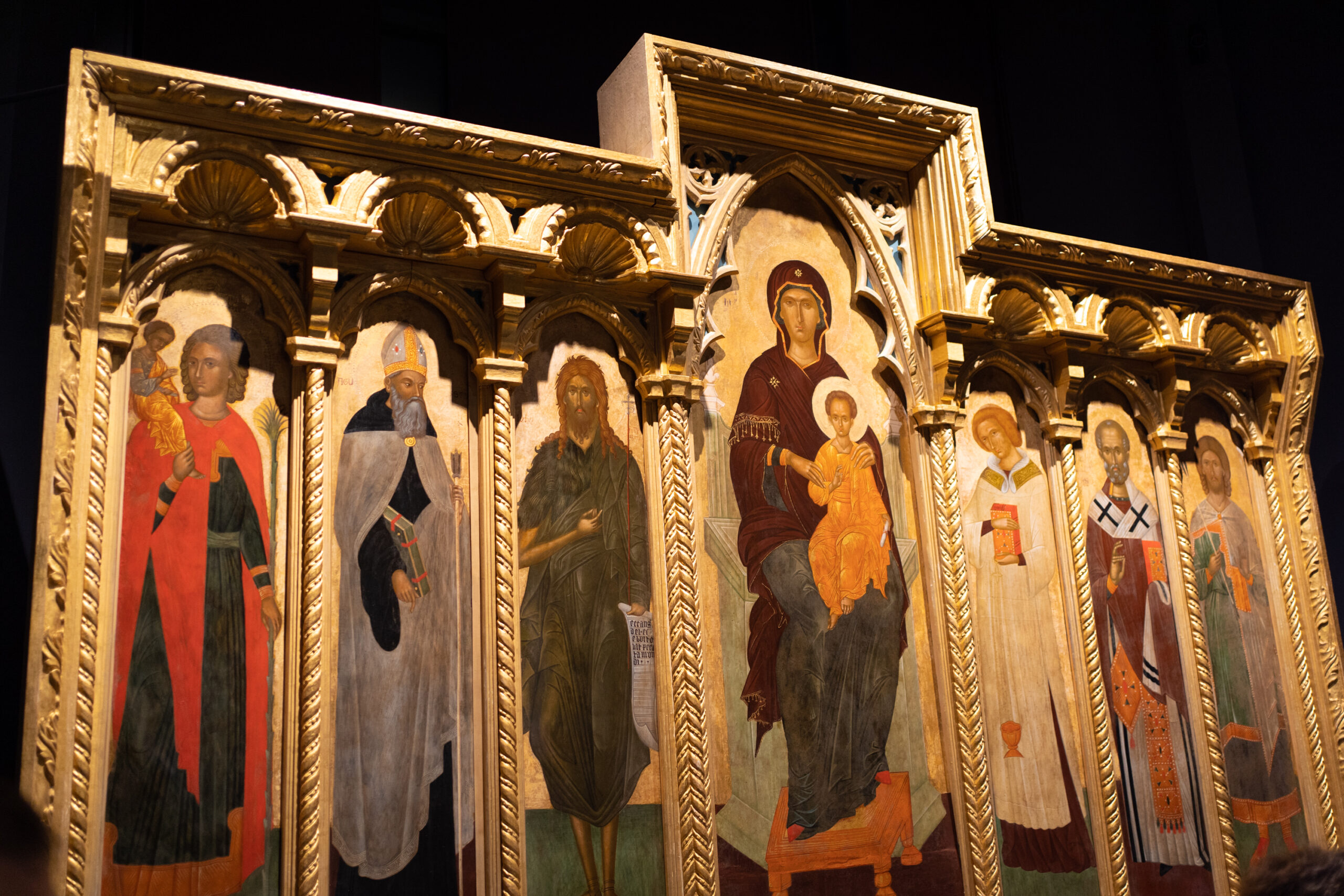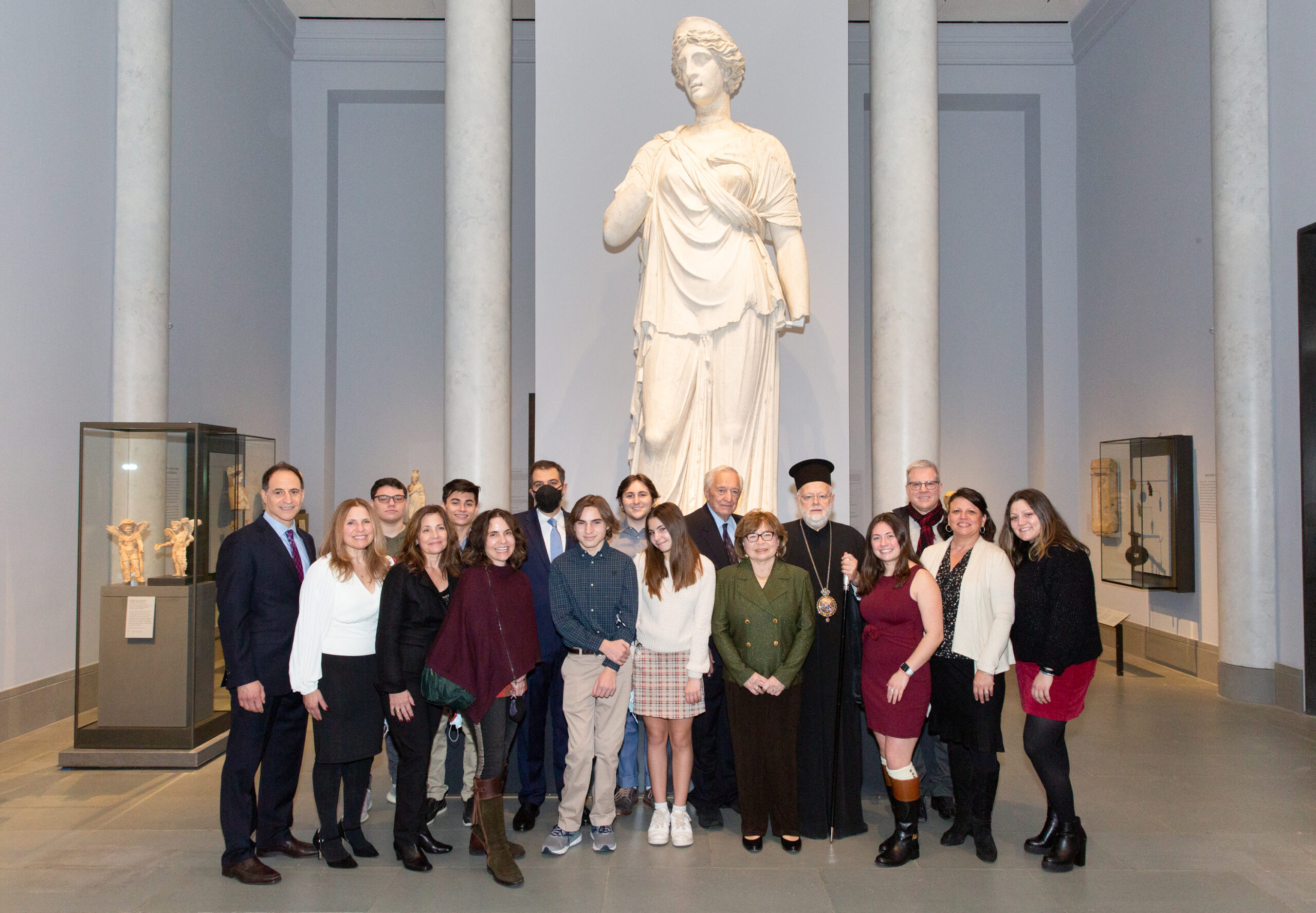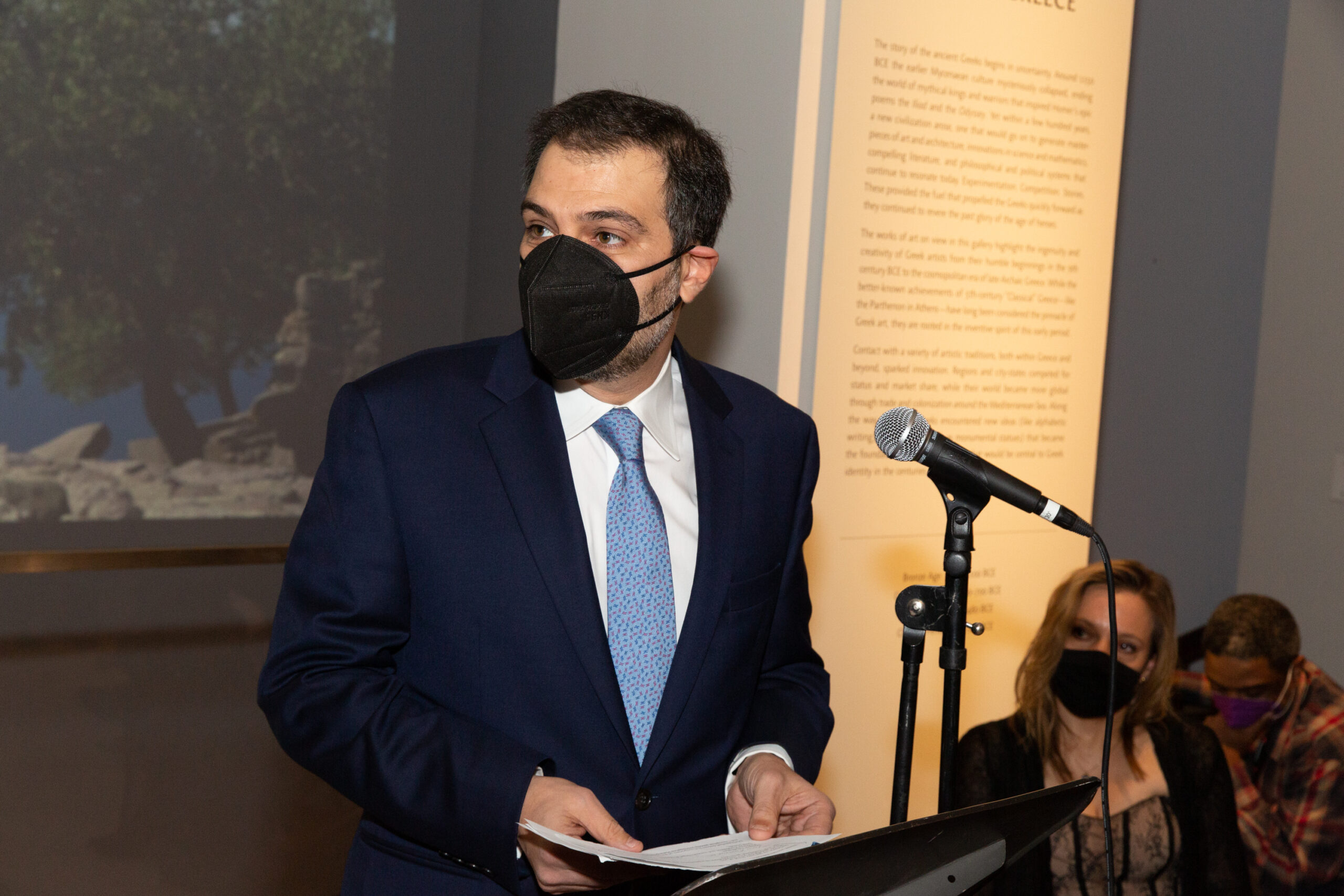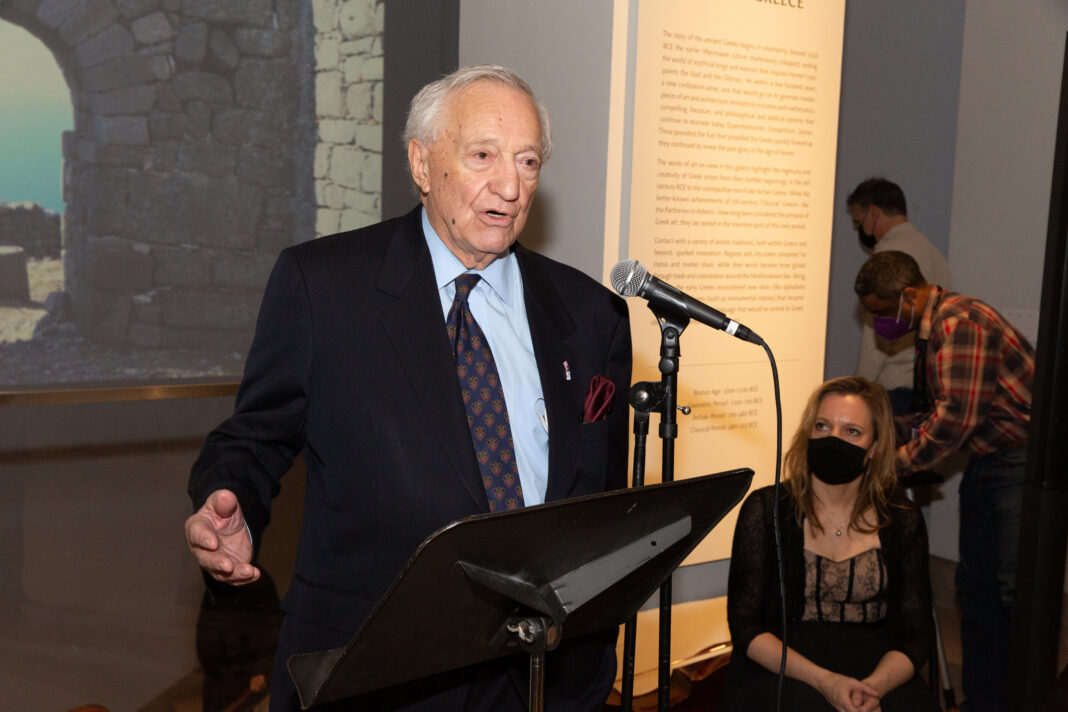The devotion of one man and his family to the legacy of Greece through art has helped create an expanded exhibit of Greek and Roman art at the Museum of Fine Arts in Boston.
The museum now boasts a transformed George D. and Margo Behrakis Wing.
The wing includes five new galleries to display the museum’s collection of Greek and Roman art, considered one of the finest and most comprehensive collections in the world.
The Behrakis family, led by George Behrakis, were key benefactors that made the new wing possible. George’s son, Drake, said that going forward the museum will be able to offer a vibrant Greek section “that maintains an ethnic identity and keeps the public educated and engaged.”

Drake Behrakis is president of Marwick Associates, a real estate investment and development company in Lexington, Mass. He’s active in the Behrakis Foundation, the family’s philanthropic arm.
The wing’s expansion and renovations took place during planned rehab work scheduled a year and a half ago during the pandemic slow down. It had a soft opening in December.
Response has been good. At a March 10 Open House, His Eminence Archbishop Elpidophoros visited with His Grace Bishop Joachim and His Grace Bishop Athenagoras, according to a March 11 article by The National Herald.
They were greeted by Matthew Teitelbaum, director to the MFA, as well as Christine Kondoleon, the George and Margo Behrakis Chair of the Department of Art of Ancient Greece and Rome, and Drake Behrakis, the article stated.
Even with COVID restrictions the open house and public dedication ceremony reached capacity, Behrakis said.
In the new exhibit, visitors will see more rooms dedicated to different art themes of Greek and Roman ancient society, as well as improved lighting and more amenable and interactive displays of artifacts.
“There’s a strong curator team that’s always looking to make sure the exhibits are modernized,” Behrakis says.
They’ve added kiosks to make the experience more interactive of what life was like back then, using audio and video that “brings to life” the story behind a particular piece of art.

Taking a tour
The first gallery is the largest and most spectacular, according to a March 14 from WBUR. The ceiling was raised six feet and daylight pours in from skylights. New decorative columns give the impression you are in an open space of an ancient temple. Here you’ll find the focus is on mythology and statuary relating to the Greek and Roman Gods and Goddesses, Behrakis said.
The Wing has new spaces devoted to Early Greek Art and Roman Portraiture, joining five other previously existing galleries, WBUR reported.
There are also two more newly-renovated galleries, one being the new Byzantine Empire gallery, the first Byzantine gallery in New England. It includes the altar of a Byzantine church along with mosaic tile and the relics used by the priests and bishops, Behrakis said.
The last newly renovated gallery is devoted to 20th and 21st Century art.
One gallery in the wing gives visitors a chance to see what daily life was like in ancient Greece, featuring artifacts like cooking utensils, cups, clothing, coins, and more.

Family involvement
Behrakis said his parents have been long-time supporters of art, especially in the Greek and Philhellenic culture.
When George Behrakis was younger, he would accompany his uncle, a painter, to a museum for art classes. That experience stayed with him.
As soon as he could afford it, George Behrakis started donating to the Boston museum.
“He saw an opportunity where he can make a mark,” a way to give back.
George Behrakis sits on the board of trustees of the museum and has given many sizeable donations over the years.
“He’s been helpful with the curators focusing on Greek and Roman art, making sure the exhibits are progressive, relevant, and competing for space with different galleries and wings.”
His parents have also donated a few items to the museum and were part of the fundraising group that began several years ago to pay for the new art wing.
“Our family has always viewed this collection as an essential way to re-educate the community and to continue the education of young students on the important contributions of Ancient Greece, but also the continued relevance of their values and beliefs,” Behrakis said.

Family background
Drake Behrakis’ paternal grandparents came to the United States from Peloponnese in the early 20th century. His paternal grandfather came with his brother to Massachusetts, and worked in the railroads in the 1920s. His paternal grandmother came over in 1912 when she was fairly young.
His mother’s family is from central Greece.
His parents met in the U.S.
Behrakis resides with his wife, Maria, and three children, George, Zoe, and Demetri, in Sudbury, Mass.

Making Hellenism relevant to Greek Americans
His family’s interest in the museum exhibit is part of an effort to support Hellenism in the United States. Drake Behrakis is chairman of the National Hellenic Society, working to preserve the Hellenic identity in America.
“We’re very Americanized. We’re ethnic-based, but we’re in a melting pot,” Behrakis said. “It’s hard to keep the connection back to Greece when you’re not breathing and living the culture every day of your life.”
Exhibits like the one at the museum provide a permanent showcase of a Greek heritage for the Greek American community, “something for our children to look upon.”
There’s more of an urgency today to keep the Hellenism flame going in America.
The previous generations were born from immigrants who left Greece and came to the United States for a reason.
“There’s not that close a connection to Greece because they were moving forward to establish lives here,” he said.
At the same time, they remained close-knit, less diverse communities here in America that identified as Greek.
“You don’t’ have that neighborhood feel like you did 50 years ago,” he said, “so today there’s more of a challenge to educate them, to find them, to engage them.”







